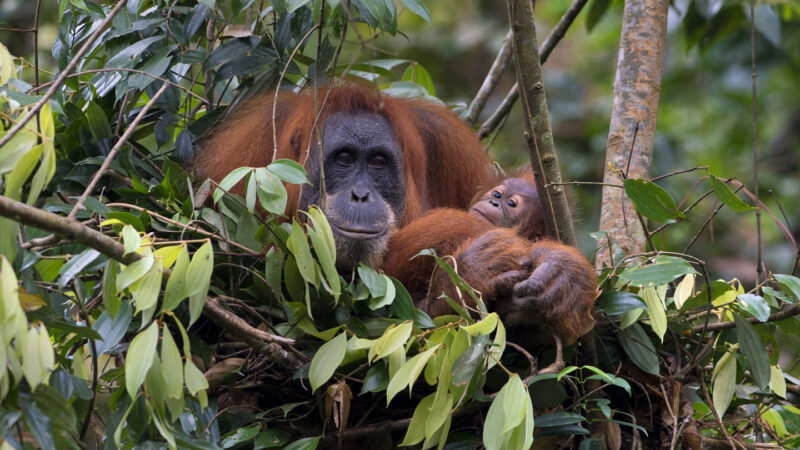
ape: A group of rather large primates, all of which lack a tail. They include gorillas, chimpanzees, bonobos, orangutans, gibbons and humans. Most people tend to group humans into their own separate subcategory owing to a number of special traits. These include a larger brain, greater mental abilities (including being able to talk) and their ability to walk on two legs.
Borneo: The largest island in Asia and third largest in the world. It is mountainous, covered by vast expanses of rainforest and sparsely populated by people. Part of its land belongs to the nation of Indonesia, a small part to the sultanate of Brunei and the rest to the nation of Malaysia.
endangered: An adjective used to describe species at risk of going extinct.
extinct: An adjective that describes a species for which there are no living members.
forest: An area of land covered mostly with trees and other woody plants.
great ape: A term for most apes (large primates that lack a tail). These include gorillas, chimpanzees, bonobos, orangutans and humans. Most scientists tend to group humans into their own separate subcategory owing to a number of special traits. These include a larger brain, greater mental abilities (including being able to talk) and their ability to walk on two legs. The only “lesser” ape is the gibbon.
insect: A type of arthropod that as an adult will have six segmented legs and three body parts: a head, thorax and abdomen. There are hundreds of thousands of insects, which include bees, beetles, flies and moths.
nurse: (in biology) A term for suckling a young mammal so that it can feed on its mother’s milk. Or individuals that care for others within their community.
nut: (in biology) The edible seed of a plant, which is usually encased in a hard protective shell.
orangutan: One of the great apes (which also include gorillas, chimpanzees and bonobos), this red-haired tree dweller shares 97 percent of its genes in common with humans. They can live for 60 years, with adults weighing 48 to 130 kilograms (105 to 286 pounds) depending on gender, age and health, with males being bigger. They have opposable thumbs (as humans do) and also opposable big toes, which aids in their gripping.
primate: The order of mammals that includes humans, apes, monkeys and related animals (such as tarsiers, the Daubentonia and other lemurs).
species: A group of similar organisms capable of producing offspring that can survive and reproduce.
Sumatra: A part of the island nation of Indonesia, this is one of its bigger islands (and indeed, the sixth largest island in the world).
tool: An object that a person or other animal makes or obtains and then uses to carry out some purpose such as reaching food, defending itself or grooming.
